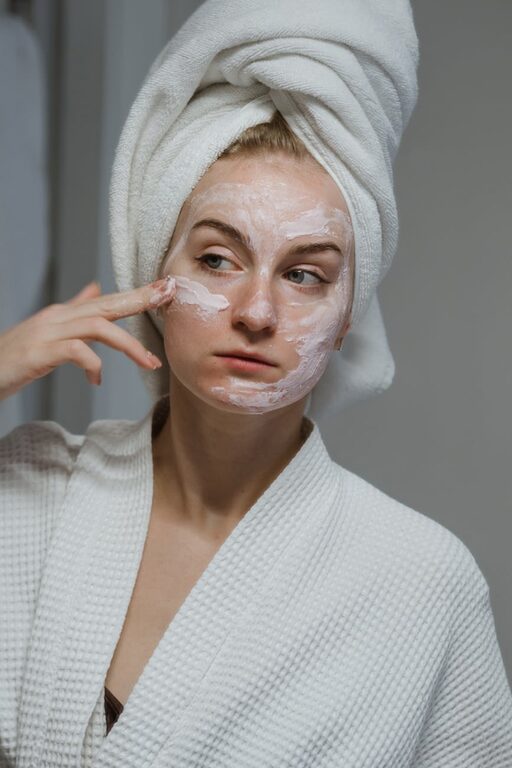Starting a basic skincare routine can seem overwhelming with the countless products and advice available. However, taking care of your skin doesn’t have to be complicated. A simple and consistent routine can help you maintain healthy, glowing skin by addressing your skin’s basic needs. In this post, we’ll guide you through the essential steps to build a skincare routine that works for you, no matter your skin type.
Why a Skincare Routine Matters
Your skin is your body’s largest organ, and it faces daily exposure to environmental factors like pollution, sun, and dirt. A regular skincare routine helps to:
– Cleanse away impurities
– Maintain moisture balance
– Protect from damage
– Support skin repair and renewal
By investing a few minutes each day, you promote healthier skin and potentially prevent common issues like dryness, oiliness, or irritation.
Step 1: Identify Your Skin Type
Before choosing products, it’s important to understand your skin type. The four main types are:
– Normal: Balanced, not too oily or dry
– Dry: Feels tight or flaky, may have rough patches
– Oily: Shiny appearance, prone to blackheads or acne
– Combination: Oily in some areas (typically the T-zone), dry or normal elsewhere
You can assess your skin type by washing your face and observing how it feels a few hours later. This will help you pick products suited to your skin’s needs.
Step 2: Gather Your Essential Products
A basic skincare routine includes three key products: a cleanser, a moisturizer, and sunscreen. Optional but helpful additions include a toner and exfoliant.
Cleanser
Choose a gentle cleanser that removes dirt and oil without stripping your skin’s natural moisture. For dry skin, creamy or hydrating cleansers are ideal. For oily skin, gel or foaming cleansers work well.
Moisturizer
Moisturizers hydrate and protect your skin barrier. For dry skin, look for richer creams. For oily skin, lightweight, oil-free moisturizers are better. Normal and combination skin types can use a balanced formula.
Sunscreen
Sunscreen is crucial for protecting skin from harmful UV rays, which can cause premature aging and skin damage. Use a broad-spectrum sunscreen with at least SPF 30 every day, even when it’s cloudy.
Optional Additions
– Toner: Balances skin’s pH and refreshes it, especially useful for oily or acne-prone skin.
– Exfoliant: Removes dead skin cells to reveal smoother skin. Use mild chemical exfoliants (like AHAs or BHAs) once or twice a week; avoid harsh scrubs.
Step 3: Establish Your Daily Routine
Consistency is key. Follow these steps twice daily—morning and night—for the best results.
Morning Routine
- **Cleanse:** Use your chosen cleanser to wash your face gently with lukewarm water.
- **Tone (Optional):** Apply toner with a cotton pad to balance your skin if desired.
- **Moisturize:** Apply your moisturizer evenly to your face and neck.
- **Apply Sunscreen:** Finish with a generous amount of sunscreen, allowing it to absorb before makeup.
- **Remove Makeup:** Use a gentle makeup remover or cleansing oil if you wear makeup.
- **Cleanse:** Cleanse your face thoroughly.
- **Tone (Optional):** Use toner to refresh your skin.
- **Moisturize:** Apply your nighttime moisturizer or a nourishing cream.
Evening Routine
Step 4: Introduce New Products Slowly
If you want to add serums or specialized treatments (like acne or anti-aging products), introduce them gradually. Apply one new product at a time and wait a few days to observe how your skin reacts.
Step 5: Pay Attention to Your Skin’s Needs
Your skin can change with seasons, diet, and lifestyle. Adjust your routine as needed. For example, you might need richer creams in winter or lighter products in summer.
Tips for Success
– Be gentle: Avoid scrubbing or using hot water, as it can irritate your skin.
– Don’t skip sunscreen: UV protection is essential every day.
– Stay hydrated and maintain a balanced diet: Healthy skin also starts from within.
– Get enough sleep: Skin repairs itself during rest.
– Wash hands before touching your face to prevent bacteria transfer.
Conclusion
Starting a basic skincare routine is about consistency, care, and using the right products for your skin type. By following these simple steps, you’ll be on your way to healthier, brighter skin without feeling overwhelmed. Remember, the best routine is the one you enjoy and can maintain daily.
If you’re unsure about your skin type or products, consider consulting a skincare professional or dermatologist for personalized advice.
Happy skincare journey!



